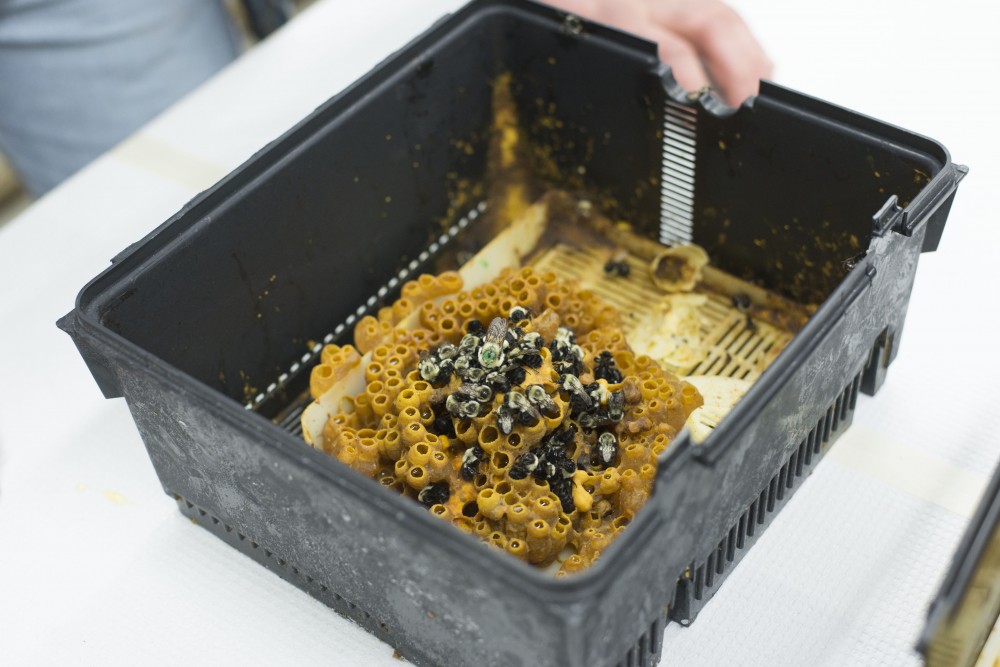“What is your perception of flowering bee lawns?”
University of Minnesota graduate student Hannah Ramer spent a summer in parks around the Twin Cities, surveying visitors about their perception of lawns scattered with bee-friendly flowers.
Ramer found that around 95 percent of people surveyed favor having flowers that are good for bees in public spaces. Researchers involved with the project said these results are shocking because they said surveyors rarely find so much support for anything. The survey results, published this month, are being used to promote more habitats that are good for pollinators around Minneapolis.
University researchers have been working with public land managers who work on city parks to promote and find ways to implement these spaces with bee-friendly flowers. The research around flowering bee lawns is funded by a grant through the Legislative-Citizen Commission on Minnesota Resources.
Previous research suggests that many people are afraid of bees and have a preference toward a uniform green lawn, Ramer said. But, she found that flowering bee lawns are “extremely popular.”
Many people surveyed were not sure what a flowering bee lawn was but were supportive of the spaces after learning that they help support bee populations.
Over the summer, University researchers held a field day with public land managers around the city to teach them about bee-friendly lawns, including information on installation, maintenance and conservation.
“These land managers are the frontline people working on this,” said Kristen Nelson, a professor in the Department of Forest Resources and Fisheries, Wildlife and Conservation Biology, who works on this research. These managers are the people who can work with city officials to promote and implement these spaces.
University researchers published an online resource guide last month to help land managers build good practices around bee-friendly lawns, including suggestions on what flowers to plant based on University research.
Along with providing good bee habitats, flowering bee lawns may use less water and increase the resilience of lawns to environmental pressures, Nelson said.
A couple challenges to putting bee-friendly lawns in public areas is that implementing new spaces may be costly and need special maintenance.
Despite these challenges, James Wolfin, a recent University graduate who helped with the research, said the researchers have seen mostly positive feedback about these flowering bee lawns.
“These lawns are small changes with a large impact,” Wolfin said.
















